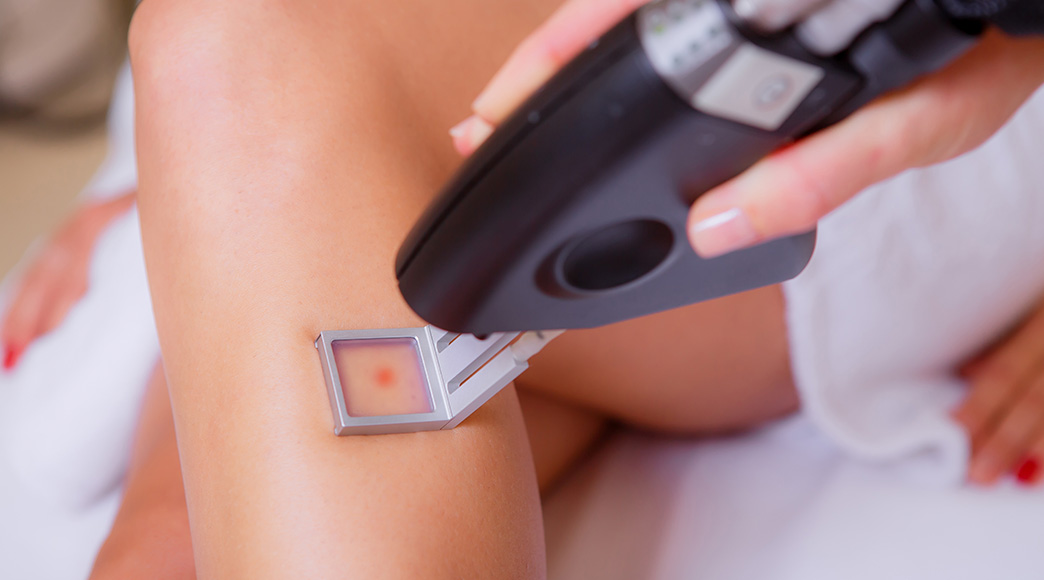-
4 January 2021
Which Skin Problems Can Affect Laser Hair Removal

There is no better relief than giving up shaving, waxing and tweezing of unwanted body hair. With the growing popularity of laser hair removal in Melbourne, it has become possible to say goodbye to these painful and tedious tasks.
However, a common concern among people who want to benefit from the treatment is whether they can get it done or not. According to expert laser technicians and clinicians, every healthy skin type and tone is suitable for laser hair removal.
However, it does not mean that people with skin conditions cannot get it done. The only requirement is that the skin should be able to withstand the impact of heat generated by the laser.
Usually, healthy skin can endure the heat, but irritated or weak skin can lead to side-effects.
The laser produces a highly targeted beam of heat and light which penetrates the skin and destroys the hair follicles to stop the growth. The treatment is completed over six to twelve sessions depending on the hair growth and the area to be covered.
The sessions are spaced six to eight weeks apart, which allow the skin to heal before the next appointment. It is essential for the skin to be healthy for the treatment to continue.
If you are facing breakouts or rashes, then the treatment will have to be paused and resumed after the problem is resolved. Most clinicians will ask you to let the skin heal completely before starting the sessions to avoid worsening of the condition.
If you have been advised medication for the issue, then you have to consult your dermatologist about the best time to start the laser treatment. Also, you must avoid all the foods and environmental conditions that can trigger a flare-up to get the best results from laser hair removal.
There are some skin conditions which are not suitable for laser hair removal such as active acne, skin cancer, pigmentation, or any fungal or bacterial infection.
However, there are other skin conditions which allow laser hair removal under the supervision of an expert and after approval from the dermatologist. Here is a list of skin conditions which are suitable for laser treatment.
There are some typical skin conditions which do not interfere with the treatment and do not require any waiting period. Let us take a look at them.
Almost everyone has a few moles. These small dark brown spots are a result of a combination of pigmented cells. They are either present on the skin from birth or develop over the years.
Although lasers are not suitable for moles, the clinician can avoid them by covering them up during the session. The practitioner usually puts a plaster over the mole so that it is not affected by the laser, which is attracted to pigment.
Some people have skin tags which are harmless growth on the skin. They usually appear after 50 years in both men and women in the upper part of the body.
They can be removed by a dermatologist, but you can undergo laser hair removal if you still have them. The practitioner pulses the laser around the skin tag without affecting it.
Also known as atopic dermatitis, eczema is an itchy skin condition which can appear anywhere on the body. If during the laser treatment, you get eczema, then that part of the skin can be avoided by the practitioner to continue with the procedure. It is safe to continue with the treatment without affecting the problem area.
Sun exposure leads to the overproduction of melanin that causes freckles.These are small brown spots on the skin which are harmless. However, they do not interfere with laser therapy.
The practitioner will deliberately avoid pulsing over the dark freckles while mottled ones can be effectively covered in the procedure. They may appear a few shades darker after the session but will come back to their original colour in a week or two.
Varicose veins are recognised by the appearance of swollen, twisted or blue or purple veins. They appear on the legs and feet and are harmless. If the person undergoing the treatment has varicose veins, then the practitioner will take precautions to avoid pulsing on them.
The treatment can be conducted by avoiding the areas which hurt or have bruises and cuts as they can worsen due to the heat of the laser. The practitioner can work on the other parts of the body and wait for the skin to heal to work on it.
It appears as discolouration of the skin in certain areas as the cells responsible for pigmentation stop functioning. It is safe to undergo laser hair removal if you have mild vitiligo which is not present in the parts that need laser treatment.
However, if you have a prominent condition, then you should not opt for laser hair removal.
If you have a skin condition and still want to opt for laser hair removal in Melbourne, then you must check with your dermatologist if you are eligible. Keep the information given above in mind to understand your chances in a better way.